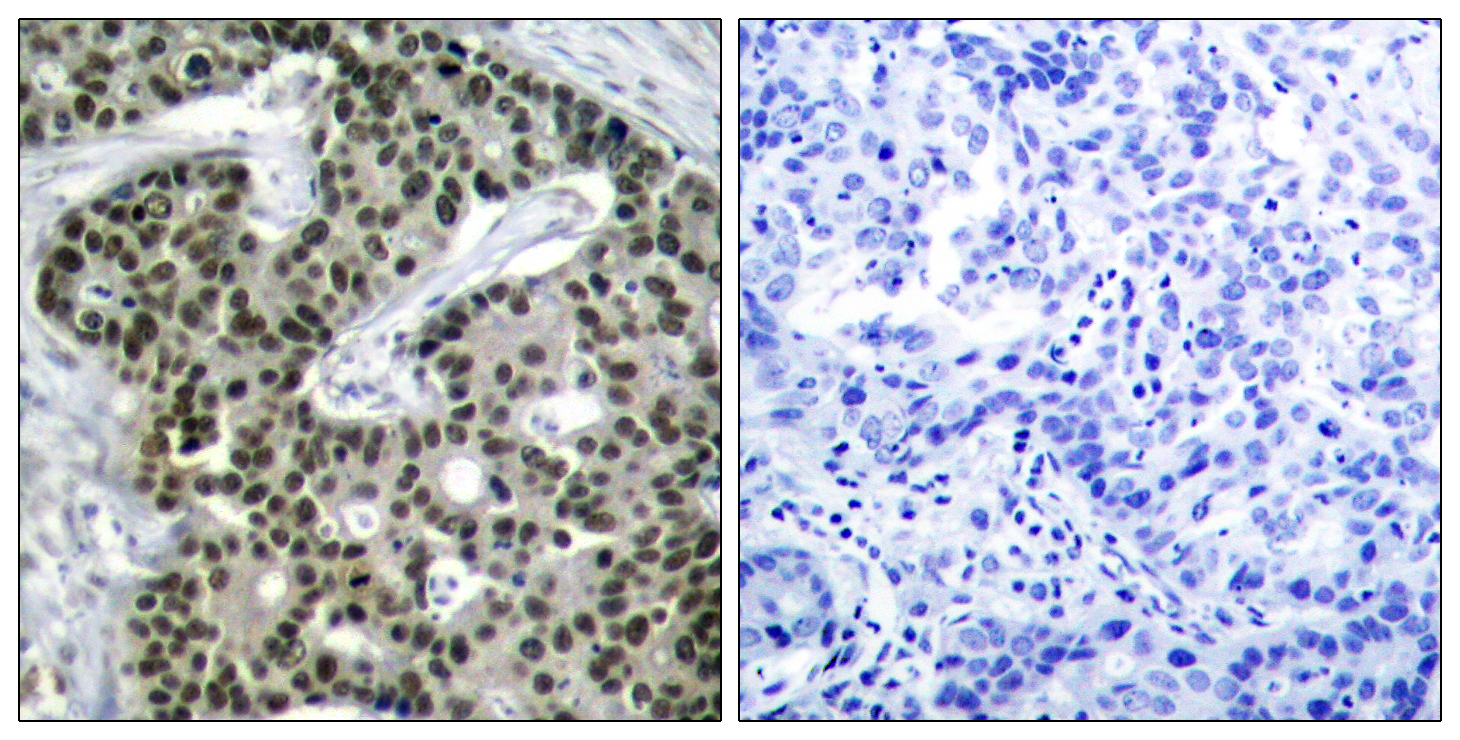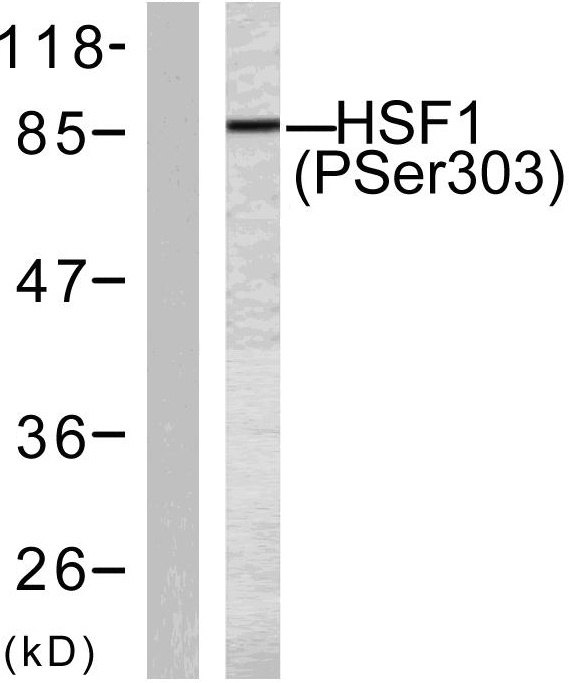HSF1 (phospho Ser303) Polyclonal Antibody
- 货号:YP0133
- 应用:WB;IHC;IF;ELISA
- 种属:Human;Mouse
- 靶点:
- HSF1
- 简介:
- >>Legionellosis
- 基因名称:
- HSF1
- 蛋白名称:
- Heat shock factor protein 1
- Human Gene Id:
- 3297
- Human Swiss Prot No:
- Q00613
- Mouse Gene Id:
- 15499
- Mouse Swiss Prot No:
- P38532
- 免疫原:
- The antiserum was produced against synthesized peptide derived from human HSF1 around the phosphorylation site of Ser303. AA range:270-319
- 特异性:
- Phospho-HSF1 (S303) Polyclonal Antibody detects endogenous levels of HSF1 protein only when phosphorylated at S303.
- 组成:
- Liquid in PBS containing 50% glycerol, 0.5% BSA and 0.02% sodium azide.
- 来源:
- Polyclonal, Rabbit,IgG
- 稀释:
- WB 1:500 - 1:2000. IHC 1:100 - 1:300. IF 1:200 - 1:1000. ELISA: 1:20000. Not yet tested in other applications.
- 纯化工艺:
- The antibody was affinity-purified from rabbit antiserum by affinity-chromatography using epitope-specific immunogen.
- 浓度:
- 1 mg/ml
- 储存:
- -15°C to -25°C/1 year(Do not lower than -25°C)
- 其他名称:
- HSF1;HSTF1;Heat shock factor protein 1;HSF 1;Heat shock transcription factor 1;HSTF 1
- 实测条带:
- 82kD
- 背景:
- heat shock transcription factor 1(HSF1) Homo sapiens The product of this gene is a transcription factor that is rapidly induced after temperature stress and binds heat shock promoter elements (HSE). This protein plays a role in the regulation of lifespan. Expression of this gene is repressed by phsphorylation, which promotes binding by heat shock protein 90. [provided by RefSeq, Aug 2016],
- 功能:
- function:DNA-binding protein that specifically binds heat shock promoter elements (HSE) and activates transcription. In higher eukaryotes, HSF is unable to bind to the HSE unless the cells are heat shocked.,PTM:Phosphorylated on multiple serine residues, a subset of which are involved in stress-related regulation of transcription activation. Constitutive phosphorylation represses transcriptional activity at normal temperatures. Levels increase on specific residues heat-shock and enhance HSF1 transactivation activity. Phosphorylation on Ser-307 derepresses activation on heat-stress and in combination with Ser-303 phosphorylation appears to be involved in recovery after heat-stress. Phosphorylated on Ser-230 by CAMK2, in vitro. Cadmium also enhances phosphorylation at this site. Phosphorylation on Ser-303 is a prerequisite for HSF1 sumoylation. Phosphorylation on Ser-121 inhibits transacti
- 细胞定位:
- Nucleus . Cytoplasm . Nucleus, nucleoplasm . Cytoplasm, perinuclear region . Cytoplasm, cytoskeleton, spindle pole . Cytoplasm, cytoskeleton, microtubule organizing center, centrosome . Chromosome, centromere, kinetochore . The monomeric form is cytoplasmic in unstressed cells (PubMed:8455624, PubMed:26159920). Predominantly nuclear protein in both unstressed and heat shocked cells (PubMed:10413683, PubMed:10359787). Translocates in the nucleus upon heat shock (PubMed:8455624). Nucleocytoplasmic shuttling protein (PubMed:26159920). Colocalizes with IER5 in the nucleus (PubMed:27354066). Colocalizes with BAG3 to the nucleus upon heat stress (PubMed:8455624, PubMed:26159920). Localizes in subnuclear granules called nuclear stress bodies (nSBs) upon heat shock (PubMed:11447121, PubMed:1151455
- 组织表达:
- Adipose tissue,Brain,Epithelium,Muscle,
- June 19-2018
- WESTERN IMMUNOBLOTTING PROTOCOL
- June 19-2018
- IMMUNOHISTOCHEMISTRY-PARAFFIN PROTOCOL
- June 19-2018
- IMMUNOFLUORESCENCE PROTOCOL
- September 08-2020
- FLOW-CYTOMEYRT-PROTOCOL
- May 20-2022
- Cell-Based ELISA│解您多样本WB检测之困扰
- July 13-2018
- CELL-BASED-ELISA-PROTOCOL-FOR-ACETYL-PROTEIN
- July 13-2018
- CELL-BASED-ELISA-PROTOCOL-FOR-PHOSPHO-PROTEIN
- July 13-2018
- Antibody-FAQs
- 产品图片

- Western Blot analysis of MCF7+TNF cells using Phospho-HSF1 (S303) Polyclonal Antibody diluted at 1:1000

- Immunohistochemistry analysis of paraffin-embedded human breast carcinoma, using HSF1 (Phospho-Ser303) Antibody. The picture on the right is blocked with the phospho peptide.

- Western blot analysis of lysates from MCF7 cells treated with TNF-alpha 20ng/ml 30', using HSF1 (Phospho-Ser303) Antibody. The lane on the left is blocked with the phospho peptide.



